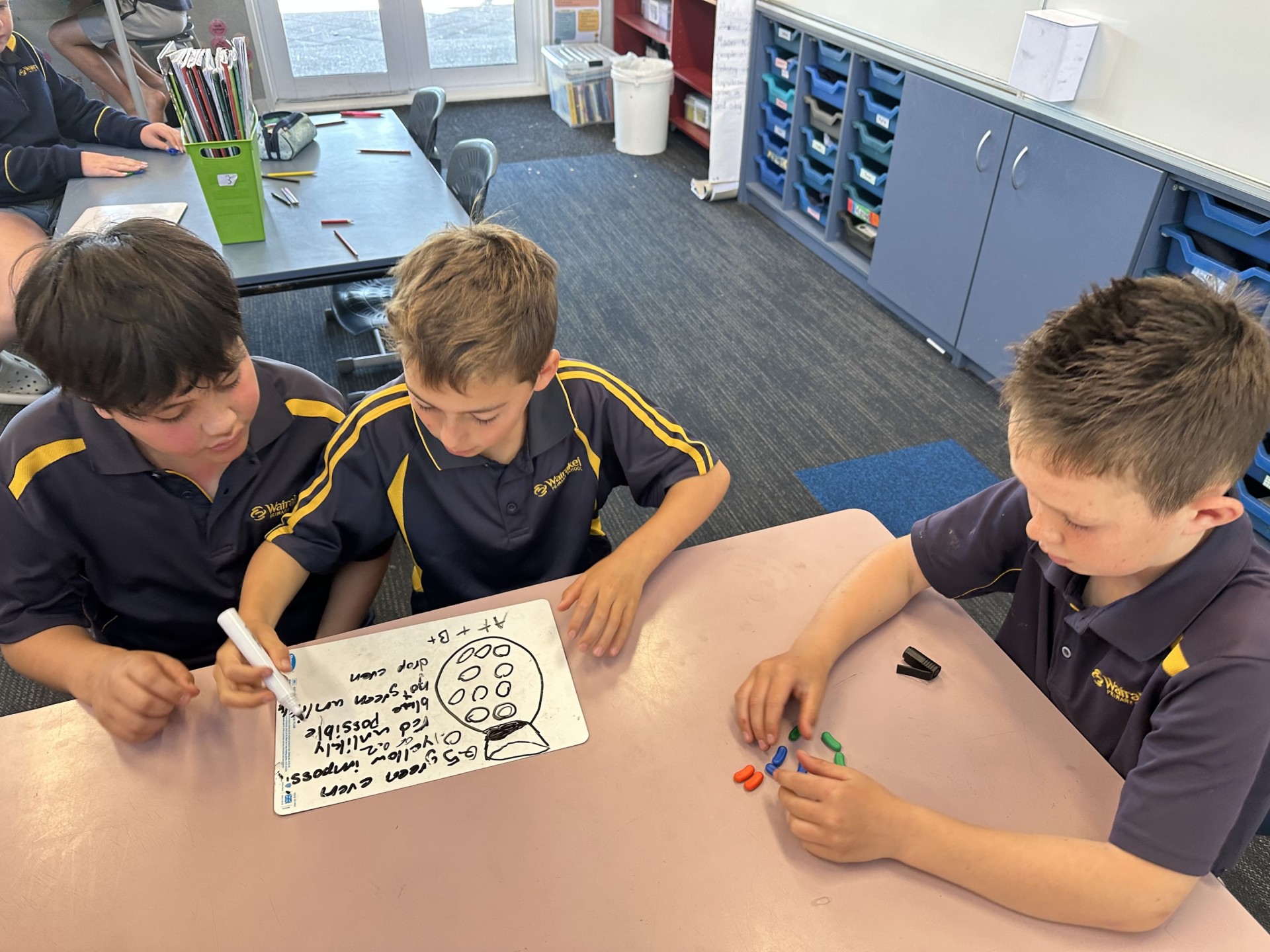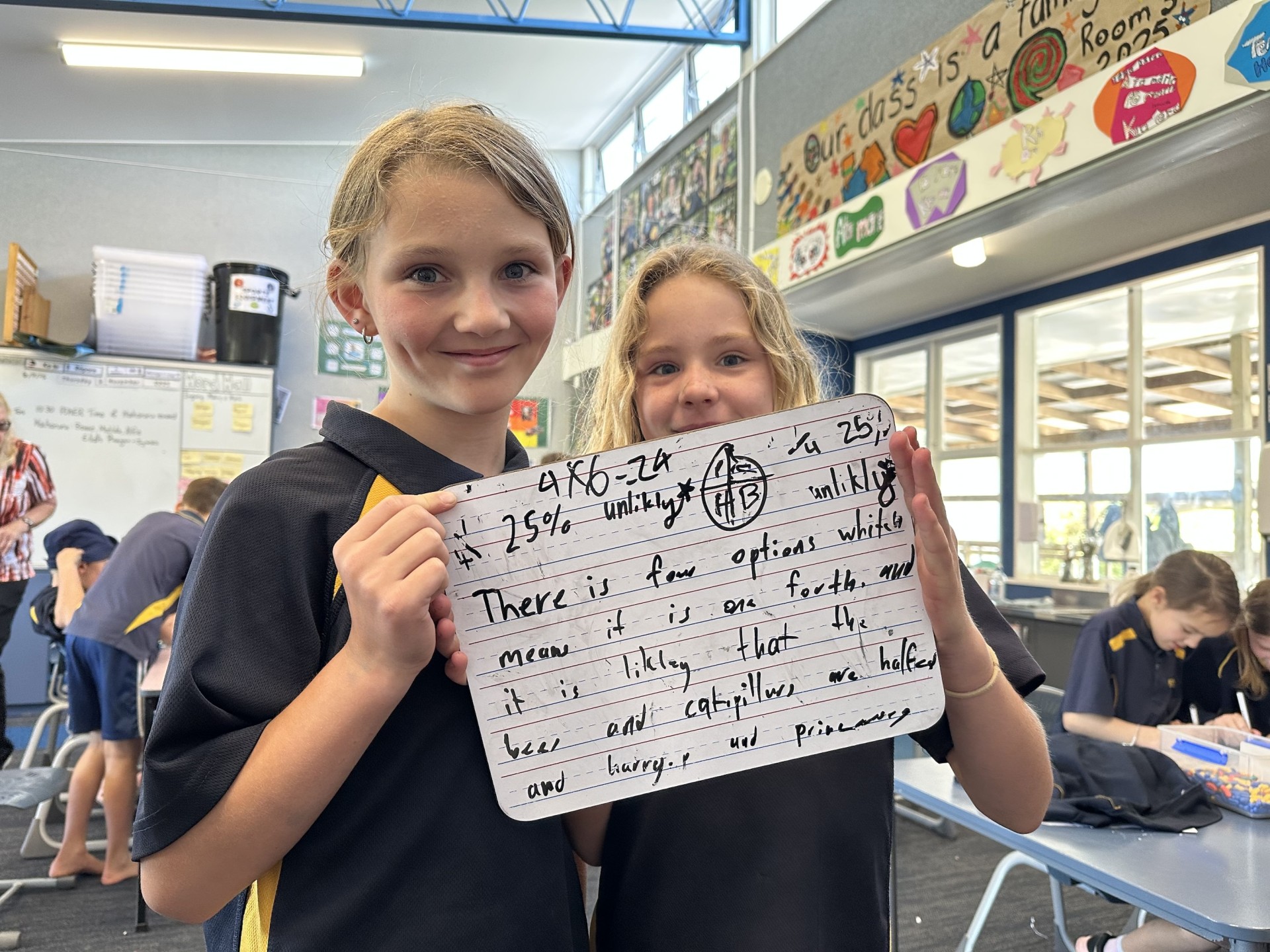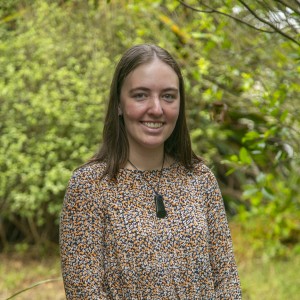Room 3 students have been exploring probability and chance through an adapted Open Ended Task from The Learner First. Open Ended Tasks are designed to challenge students’ thinking and encourage them to explore multiple possibilities rather than search for one single “right” answer. They promote reasoning, discussion, and reflection, helping students develop deeper understanding of mathematical concepts.
The challenge
The teachers have dressed up for the Book Fair. Half are bees or caterpillars and there are an equal number of Harry Potters and princesses. What is the probability of Whaea Jess being a princess?
Students worked in pairs or small groups to discuss their ideas and find solutions. Their conversations filled the classroom as students compared their reasoning and explained their thinking.
It has to be 25%
But if we divide the numbers further, if there are equal numbers, it is actually one quarter each.
There is an even chance of Whaea Jess being a caterpillar, bee, Harry Potter, or princess for the Book Fair.
If we do not know the exact number of bees and caterpillars, there is an unlikely chance that Whaea Jess is a princess
To represent their thinking, a variety of strategies were used. Micah created a number line to show the probability of each costume choice, carefully marking fractions along the line to illustrate even and uneven chances. While Bowie and Matilda chose to present their findings in a pie chart, visually dividing the “teacher costumes” into equal sections to show the likelihood of each outcome. These different approaches helped students explain their reasoning in ways that made sense to them and their peers.
Through these discussions, students developed their ability to describe probability using words like even chance, unlikely, and certain. They also explored fractions in a practical context, confidently using ½ and ¼ to represent probability. When challenged to use smaller fractions, like ⅛, students found it more difficult, which sparked further discussion and problem-solving.
Confidence grew in using fractions to describe probability. For example, Jynesis initially struggled with ⅛ , was able to explain her thinking after working through the problem with her group. These moments revealed how peer discussion can support deeper understanding and build confidence in reasoning.
To further extend their learning, Year 6 students were challenged to create their own open-ended probability questions to share with the class. This step encouraged students to think critically about how probability works in different situations and to apply their knowledge creatively.
I wasn’t too sure how to start my question but then I thought if I started with the total number of bikes and worked it from there I would understand the rest.
We thought we had figured out an answer to our question. When sharing with the group we realised that the question was good but our solution needed changing.
Using an open ended task highlighted the importance of collaboration, discussion, and persistence. Room 3 students practised explaining their reasoning clearly, asking questions, and listening to their peers’ ideas. They also learned that in probability, the way a question is framed can change the answer, which encourages careful thinking and attention to detail.
Room 3 showed that probability isn’t just about numbers - it’s about reasoning, communicating ideas, and exploring multiple possibilities. By working together, sharing ideas, and challenging each other’s thinking, students strengthened both their mathematical understanding and their confidence in problem-solving.







Comments
No one has commented on this post yet.